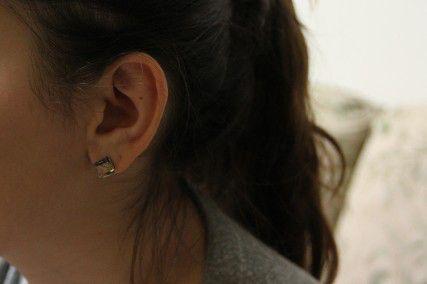
Those of us that can hear often take our fantastically complex and precise ears for granted.
Current cochlear implants help people with severe and profound hearing loss to communicate more efficiently with the world, but they do so with limited quality. However, a team of researchers at the University of Washington, headed by electrical engineering professor Les Atlas, has made promising initial advances in improving the quality of cochlear implants, especially with regard to communicating pitch.
What do cochlear implants do?
Cochlear implants are small, impressively intricate devices that allow someone with a damaged inner ear to perceive sound and speech better. They transfer sound to electrical signals to directly stimulate the human auditory nerve, thus bypassing the damaged inner ear and sending “sound” signals to the brain. The auditory nerve is stimulated by an array of electrodes, which transfer electrical signals from the implant to specific reigns of the nerve.
A fundamental problem with hearing through electrical stimulation, however, is the lack of precision in terms of isolating frequency. The notes in songs and the inflection in everyday language are understood because of our ear’s ability to adequately isolate frequency.
Atlas said that electrical stimulation has a “spread of current” in our ears that is much greater than that found in normal functioning ears. In other words, electrodes are too large to stimulate individual pitches on the cochlear nerve. They instead excite multiple receptor areas at once.
Atlas used the analogy of a piano to demonstrate how the human ear understands electrical stimulation.
“It’s like playing a piano, but instead of using your fingers, you’re playing with your forearm,” he said. “So when you are playing different tunes and you’ve got this broad patch you’re pushing down, hitting a bunch of keys with your forearm, it doesn’t sound very tonal anymore. You can get the rhythm fine, but you can’t get the tonality very well.”
What is changing?
Atlas said the new research into cochlear implants still uses the method of electrical stimulation via electrode. However, current research also applies that concept in a novel and unique manner.
Atlas and other members of his team, including research collaborator Jay Rubinstein, a bioengineering and otolaryngology professor at UW, are aiming to vastly improve implant quality with a fundamental change in approach. Instead of communicating pitch as the highness and lowness of tones, this new cochlear implant represents pitch as the repetition rate of the stimulation signal. If someone sings a pitch that vibrates 440 times per second, the cochlear implant signal would oscillate from loud to soft at the same rate. Since our brain understands pitch by both the stimulation place (on the cochlear nerve) and stimulation rate, the pitch is therefore conveyed accurately.
“Imagine you can now take the piano keys and push them up or down really fast, at the rate of pitch, which could be 80 times per second, 300 times per second,” Atlas said. “The rate at which you are pushing the keys up and down is changing along with the pitch.”
This rapid change in signal input simulates the pitch’s natural frequency. Through this research, cochlear implants can now represent a sound’s attributes more faithfully. The information about pitch, however, takes more time to process. Atlas’s team is working to reduce the time required to process this new information.
“The progress we are making is how to encode the pitch efficiently when done at the same time as phonetic and note rate,” Atlas said.
Remaining obstacles
Such a new method of approach is bound to have initial complications inhibiting development, and this one is no different. The complexity of the coding in the cochlear implant is something that Atlas and his team still need to work on.
“It focuses on the accurate representation of harmonics,” Rubinstein said. “We specifically code to the harmonics in the sound.”
The harmonics of any specific sound are the amount of higher tones embedded within that base tone. The coding for this constantly occurring phenomenon is complex, but certainly not impossible.
Note rate and natural speech patterns can play a challenge, considering that each has its own rate of repetition. A natural consequence of translating pitch to the frequency of vibrations is the potential for interference with natural speaking frequency and note repetition. While they do not vibrate normally near the same rate that pitch does (which regularly achieve rates of 5,000 times per second), Atlas and his team are already thinking ahead to eliminate potential interference between the two.
“What we’ve been working on is what percentage of the time domain signal conveys the pitch versus how much conveys the slower information, which is the notes or phonemes in speech,” Atlas said.
The time domain signal can be understood as the signal’s time component, which conveys both pitch and speech patterns in this new implant.
Impacts of new implants
Anything that involves music or speech has the potential to be enjoyed and understood more by people who are deaf or cannot hear well. Fields such as education and communication are just a few areas that have been positively affected by the upcoming cochlear implant study.
Hearing and education
The ability to communicate with children is essential for instruction in schools. While other methods of interaction can be used, verbal collaboration is one of the main ways to communicate with students.
“I like to approach education by trying to find out how many forms of communication you can open up with your students,” said School of Education sophomore Erin Strickland. “I’m a special education major, so trying to work with students with pictures and songs is really huge. When people talk about working with cochlear implants, I find that very exciting because that’s reopening a form of communication that you can use with students.”
Along with music, simply conversing with students is also essential for their learning processes. Conventional cochlear implants are still difficult to hear with and generally make identifying words difficult. Such impairments can severally hinder children in school who cannot understand their teachers.
Amrita Kotak, a senior in Sargent College of Health and Rehabilitation Sciences, has listened to conventional cochlear implants in class.
“It was difficult to understand,” she said. “We had an entire passage we had to interpret and it was really frustrating. I think it would be really helpful — for daily life especially — for cochlear implants to be improved.”
Atlas’s cochlear implant, although still in its early stages of development, improves the understandability of traditional implants. With more pitch of the words present, language is easier to understand. Intrinsic speech patterns, such as inflections, can be conveyed more effectively to those who require cochlear implants.
People that speak tone-based languages, such as Mandarin Chinese, are at even more of a disadvantage than non-tonal language speakers. For example, the Mandarin word “ma” has different meanings with different tones. Spoken with one inflection and “ma” means “mother.” Said with a slightly different tone, and it becomes “horse.”
With the ability to distinguish more between tones will come improved understanding and communication in highly tonal-languages.
Music and pitch
Perhaps most obviously, improvements in pitch distinction result in improvements in listening to music. As a universal language, music has the power to impact the lives of whomever it touches.
“Music can help others a lot, even if you’re not a music major, said Rui Liu, a second-year graduate student in the College of Fine Arts. “When I’m busy, I listen to music. When I’m free, I listen to music. When I’m exhausted, I listen to music — it’s always there for me and has a strong role in my life.”
Indeed, both Atlas and Rubinstein have strong roots in music. Atlas worked with rock bands’ guitar amplifiers and Rubinstein plays a number of different instruments in various styles. This background led them to focus on refining cochlear implants by focusing on music.
The improved cochlear implant is still in development, but it is on its way to becoming publicly available. Atlas said that the final product is still more than a year away and perhaps even five years away.
But though the enhanced implant is still a few years off, significant progress is being made toward providing everyone with a way to understand language more effectively and enjoy music like never before.
Listen to examples of the simulated conventional Cl song 1, simulated UW Approach song 1 and the original music song.




























































































































Brigitte Feia • Jan 16, 2014 at 9:41 pm
I enjoyed the article and found it to be very informative. As a music lover the references to music helped me understand how the human ear understands electrical stimulation. The article brings hope to those who desire additional improvements in cochlear implants especially to those who desire the ability to listen to music.
Child of Deaf Adults • Oct 22, 2013 at 12:44 pm
While I appreciate the fact that you explored the weaknesses of cochlear implants, I feel like this article is geared mainly towards the positives of cochlear implants. Like you briefly mentioned, they are not perfect and they do not recover hearing in the most clean, precise way at all. This hinders a d/Deaf student’s ability to learn.
I wish this had explored other opportunities and resources that d/Deaf students use to communicate, especially in a school setting. Sign language is a powerful thing that is often “shamed” upon by the medical and hearing communities. It is probably one of the more accurate ways a deaf student can learn because it relies on skills that they can pick up without “fixing” a part of themselves. Instead of “fixing” the Deaf, why aren’t we, as hearing people and educators, willing to take classes and immerse ourselves into another language and another culture in order to provide them with the education they need. Deafness is not necessarily something that needs to be fixed — sure, it’s nice for this opportunity to be out there for people who want it. But it’s important to understand and to explain that this isn’t the only option and it should never be considered the only option.
To make this article less biased I think you should’ve surveyed those who are against cochlear implants and see what they think of the improvements/what other options they prefer.
james • Oct 29, 2013 at 11:07 pm
“… why aren’t we, as hearing people and educators, willing to take classes and immerse ourselves into another language and another culture in order to provide them with the education they need”
Prob the same reason why there are still stairs, which are barriers to those less mobile.
The needs of the few seldom spur the inertia of the many.
Technology provides practical solutions and is faster than societal change.
stroyde • Nov 11, 2013 at 10:28 am
This article isn’t biased. But claiming it be shows your bias . Is it now un-PC to not recapitulate every aspect of every topic when the immediate objective is to convey good news in just one area? People have work to do in limited time, so let them do it, be they researchers or the reporters covering that research.